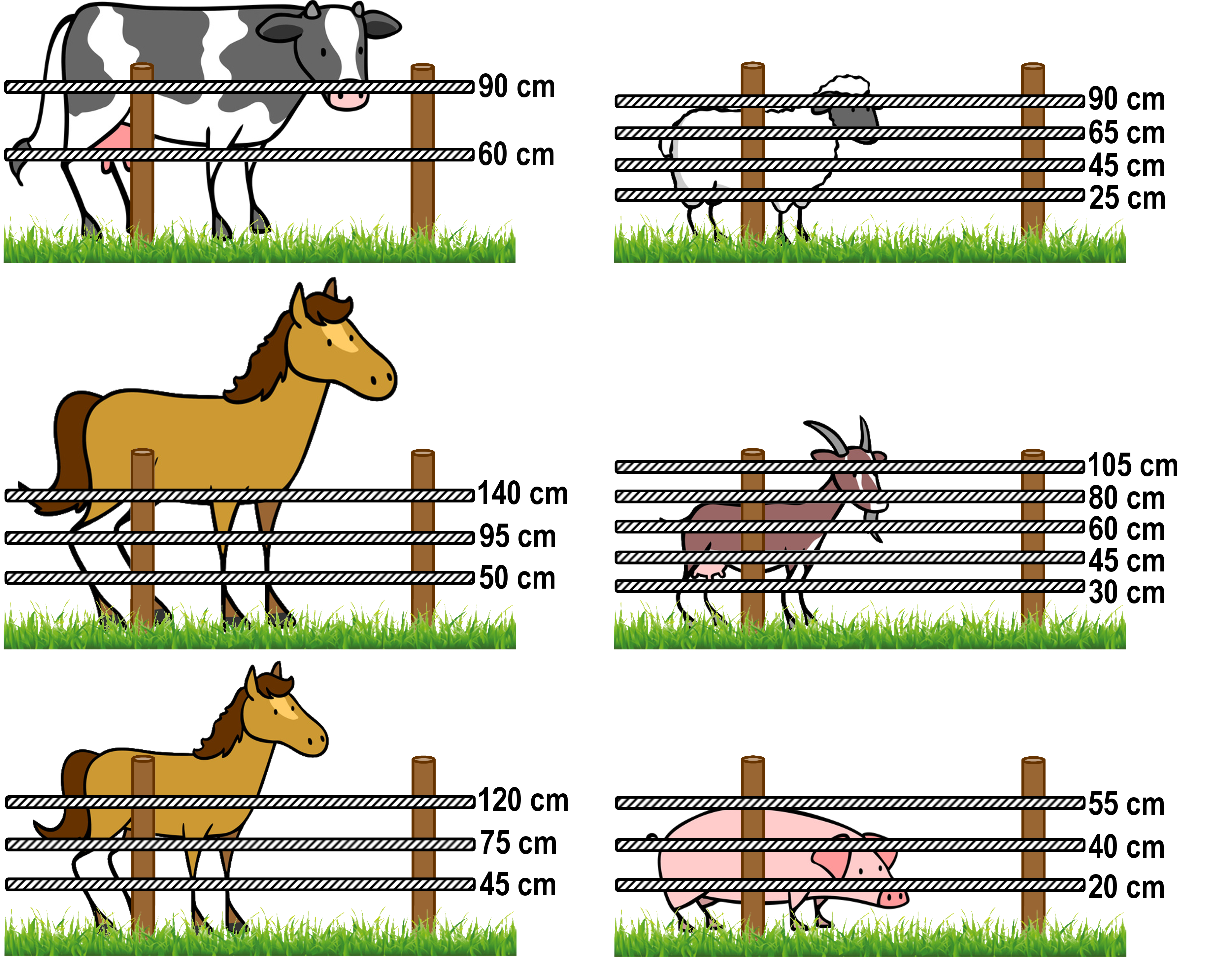04/01/2024
Fence heights and number of rows

These recommendations are guidelines that every animal owner can follow. The number of rows, in particular, but also the height, often depends on the animal's gender, actual size (breed differences!), and temperament. For example, a horse prone to escape should have a higher fence than a tame pony.
Poultry netting is recommended for poultry, as the mesh size and number of rows prevent our feathered friends from escaping. However, you can also use multiple rows (4, preferably 5). The important thing is that the bottom row is deep enough that the chickens can't slip through underneath, and the top row is high enough that they can't fly over.
Recommendations for the spacing between individual posts vary considerably. However, a rough guideline is that a distance of 5 m should be maintained. Permanent fences (e.g., wooden posts) may require a slightly larger spacing than mobile fences (e.g., plastic posts – they are not as stable as wooden posts and should therefore be placed closer together). It's also important to consider the layout of your paddock/pasture. Steep sections, for example, should have closer post spacing. Pastures on loose or rocky ground, where the posts are less stable, should also have a smaller spacing.
